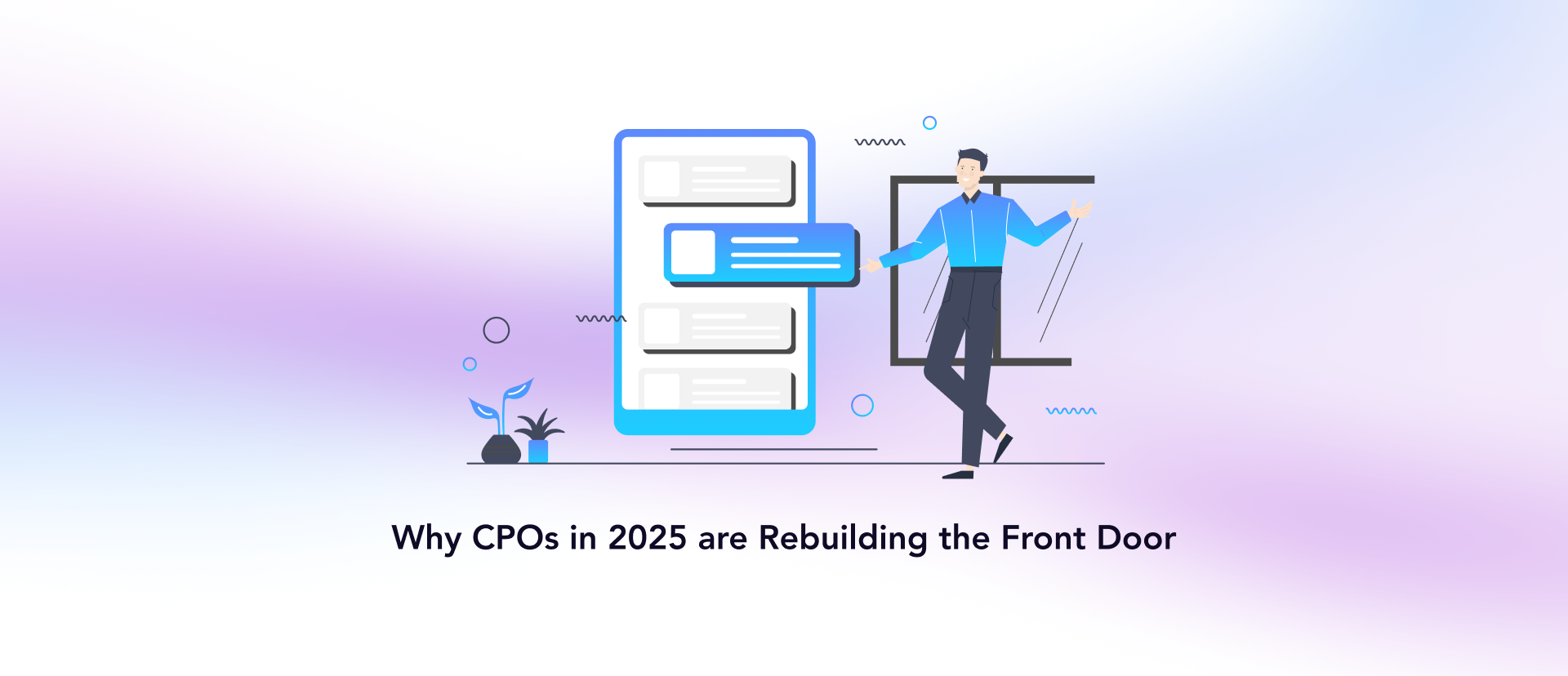Strategic Procurement
The Hidden Cost of Bad Procurement Intake Data
Executive Summary
- Hidden intake inefficiencies cost enterprises $600B+ annually in delays, rework, and disputes
- 74% of procurement leaders say their data isn’t AI-ready
- 85% of AI-driven procurement projects fail due to unreliable spend data
- Fixing bad data is 100x more expensive than preventing it, making intake critical for ROI
Introduction
In today’s procurement world, data flows like oxygen. It keeps operations alive and thriving. Yet, many organizations unknowingly breathe in “polluted” data: incomplete, inaccurate, inconsistent intake information.
This flawed data doesn’t just disrupt sourcing or analytics but it quietly drains millions. The real cost of poor intake is missed savings, supplier risk, failed AI investments, and strategic paralysis. CPOs today are under pressure to deliver cost savings. But even with the best platforms and dashboards, procurement leaders still say their intake data isn't AI-ready.
.png)
Read this blog to uncover the hidden costs of bad intake data and why fixing intake is procurement’s best ROI move.
The Foundation: Why Intake Data Quality Matters in Procurement
Procurement intake data includes specifications, pricing structures, timelines, and more. This information forms the foundation for every procurement decision and downstream activity such as sourcing, supplier evaluation, negotiations, and contract awarding.
Unfortunately, this foundation is often flawed. Many procurement teams still rely on traditional methods like forms, emails, spreadsheets that fail to capture vital context, detailed requirements, and priorities.
Missing this context leads to rework, misaligned sourcing, and lost leverage downstream.
For Example:
A request simply states: “Need to purchase 100 laptops for new hires.” Without clarifying questions, procurement might source generic, low-cost models focusing only on price. But if these laptops are for specialized roles like software development or graphic design, they require specific configurations or security features. Missing this context results in delays, user dissatisfaction, and extra costs later.
The Domino Effect: Poor Intake Data Causes

- Stalled RFx Creation: Unclear specifications, categories, or business context slow down supplier identification, delaying sourcing cycles or forcing overreliance on existing vendors without exploring better options
- Weakened Negotiation: Poorly scoped sourcing requests undermine preparation and bargaining power, which can increase purchase costs
- Unreliable Supplier Evaluation: Vague or incomplete intake data complicates evaluation criteria definition, increasing the risk of selecting underperformers
- Compromised Contract Awarding: Missing requirements combined with outdated compliance or financial data increases exposure to supplier risks and disruptions
- Wasted Analytics Investments: Flawed intake data contaminates downstream analytics like spend analysis and demand forecasting, resulting in unreliable insights that erode confidence in strategic decisions
.png)
The ripple effects weaken every procurement stage, even when advanced AI tools are involved. According to The Data Warehousing Institute (TDWI), incomplete or missing data costs U.S. companies over $600 billion annually.
The Hidden Costs: Beyond What You See
Bad intake data causes much more damage than what’s immediately visible. Its true cost lies in hidden inefficiencies and lost opportunities that slowly erode profitability, productivity, and strategic advantage.
1. Duplicate and Unnecessary Purchases
.png)
When intake requests lack clear specifications, procurement struggles to check stock or prior orders across departments.
This confusion leads to multiple purchases of the same component from different suppliers or units.
Let's see an example to understand:
A global manufacturing company found different departments requested the same critical component using varied terminology because of unstructured forms.
Although one category manager oversaw these purchases, lack of standardized terminology, item codes, or automated matching caused redundant orders.
Industry research shows up to 10% of procurement invoices are duplicates linked to poor intake clarity, resulting in excess inventory, tied-up capital, and congested warehouse space.
2. Hidden Labor Costs
.png)
According to Gartner, procurement staff spend up to 27% of their time fixing data quality issues rather than focusing on strategic sourcing or supplier management. This can add up to days of effort each month, leading to fewer sourcing initiatives, slower negotiations, and delayed supplier onboarding reducing cost-saving opportunities and agility.
3. Stockouts Triggered by Poor Demand Forecasting
.png)
When intake data sits fragmented across emails, spreadsheets, and legacy tools, even the best demand plans start to fall apart.
Everyone knows when the big spikes are coming: Black Friday, Thanksgiving, Christmas. Planning for them isn’t a problem. But, executing on those plans across fragmented tools and broken intake workflows is.
Your teams might plan months in advance for known demand spikes. But if requests are scattered across these legacy tools, critical details get missed.
Suppliers get looped in late. Lead times shrink. And suddenly, your team is paying 15–20% more for expedited shipments or premium suppliers just to keep shelves stocked.
Now add in the micro demand triggers.
An influencer-led spike, a flash sale by a partner, or a regional festival. These rarely make it into the annual plan, but they hit your supply chain just as hard.
Without structured, real-time intake, procurement is always reacting after the fact.
What looks like a minor stockout is often a symptom of broken intake. And over time, it quietly erodes customer trust and damages brand reputation. Industry reports also suggest that global stockouts cost businesses $1.8 trillion annually with bad procurement intake data being a major contributing factor.
4. Failed Digital Transformation Projects
.png)
Many organizations invest heavily in AI and automation for procurement optimization. Gartner reports CPOs expect data and AI to be central to decisions by 2030. However, over 30% of spend data remains scattered across systems.
This forces manual overrides and costly consultancy engagements, inflating transformation costs by millions and delaying digital initiatives by months. Today, over 85% of AI procurement projects fall short due to poor intake data quality.
5. Risk and Compliance Failures
.png)
In regulated industries like financial services, errors such as invalid supplier certifications or outdated compliance data have led to fines in the hundreds of thousands, plus prolonged audits and remediation expenses. These failures damage business partner trust and increase ongoing operational risks.
6. Stakeholder Friction
.png)
Effective stakeholder engagement is crucial. Intake forms that omit “why” and “success criteria” frustrate business partners. As a result, around 80% of enterprise spend bypasses formal procurement, escalating compliance risks, maverick spending, and lost savings. Organizations with poor intake engagement experience 25% higher maverick spend and frequent policy violations, damaging procurement governance.
Why These Hidden Costs Matter
Intake data quality directly affects operational efficiency and strategic effectiveness.
Operationally, accurate and timely data ensures smooth processing of purchase requisitions, supplier onboarding, contract compliance, and performance tracking. Poor data leads to duplicated effort, manual fixes, longer cycles, and errors.
Strategically, reliable data underpins analytics for smarter decisions, risk mitigation, and savings. When data can’t be trusted, so can’t the decisions. Over 74% of leaders lack confidence in their procurement data, leading to questionable sourcing and supplier choices.
Poor data quality weakens procurement’s value delivery and jeopardizes organizational competitiveness.
How Much is Bad Intake Data Costing Your Organization?
.png)
While the exact figure requires a detailed audit, however, the cost is certainly well above zero!
A recent Dun & Bradstreet report highlights that fixing poor data is far more expensive than preventing it. For example, with 500,000 records and 30% inaccuracies, corrections might cost $15 million while prevention would cost only $150,000.
This stark difference underscores the urgent need to prioritize data quality.
Why Procurement Teams Struggle to Measure These Costs
Despite these challenges, many procurement teams find it hard to quantify impacts because of:
- Complexity and invisibility of hidden costs buried in daily operations
- Lack of standard metrics to measure time lost, duplicate spending, or opportunity costs effectively
- Treating data quality as an IT-only issue rather than a strategic enterprise priority
- Limited executive awareness about data governance importance
Without accurate measurement, organizations struggle to justify investments in data governance, cleansing, or AI that could greatly improve procurement.
How Quality Intake Data Drives Procurement Excellence
Procurement must evolve beyond transactional roles to become strategic partners driving value, managing risks, and strengthening supply chains. High-quality intake data is the foundation enabling this transformation.
.png)
- Unlock Strategic Opportunities:
Complete, standardized data provides visibility into demand, spend, and suppliers. This empowers consolidation of sourcing, volume discount leverage, better payment terms, and proactive supplier performance management. - Drive Cost Efficiency:
Clean data reveals savings by exposing contract compliance gaps and reducing maverick spend. It supports precise sourcing plans and boosts spend-under-management to cut unnecessary costs. - Strengthen Risk Management:
Trusted data enables early detection of supplier risks and compliance monitoring, turning risk management into a proactive strategy that safeguards supply chain continuity.
Ultimately, good intake data shifts procurement from reactive firefighting to proactive value creation, elevating procurement as a driver of savings, risk mitigation, and competitive advantage.
Turning the Tide: How to Combat Bad Intake Data
Procurement teams can reclaim efficiency and reduce costs by:
- Standardizing and automating data capture with digital forms tailored to each category or request type, requiring mandatory context fields, rationale, and objectives
- Establishing strong data governance with clear ownership, accountability, and validation procedures
- Leveraging data enrichment by augmenting internal data with trusted external sources to refine supplier and spend information
- Building a data-driven culture where leadership and procurement align on data quality priorities for sustainable improvement
Conclusion: Investing in Data Quality Means Investing in Procurement Success
Bad intake data is an expensive hidden tax that inflates costs, stalls sourcing, and wastes analytics potential. Its ripple effects degrade productivity, decision-making, and risk management.
But when you treat intake as strategic infrastructure and not as a side process, you reclaim control, reduce waste, and unlock smarter procurement at scale.
Clean data is the oxygen that keeps procurement agile and cost-effective today and into the future.
Ready to transform your intake management and drive your business forward?
Request a demo and discover the power of Aerchain.
Share this post
Ready to Source Autonomously with Aerchain?
Explore the power of AI Agents in transforming procurement processes.

.png)








.jpg)
